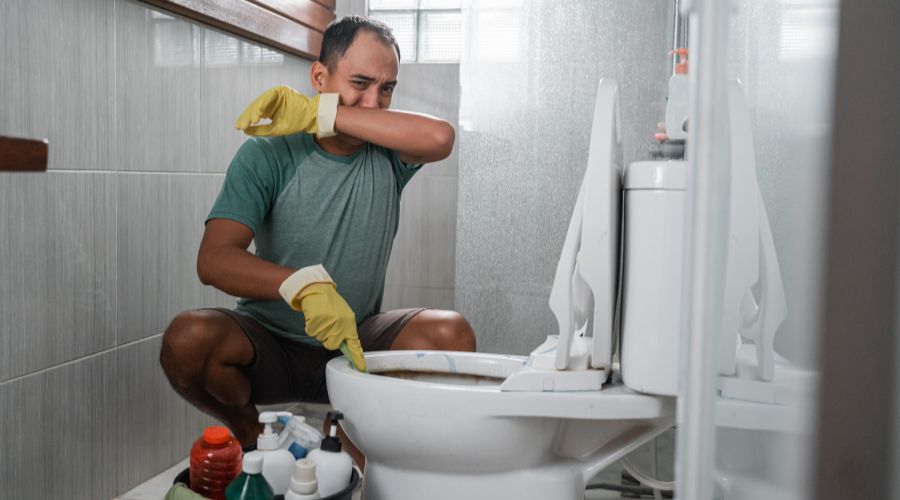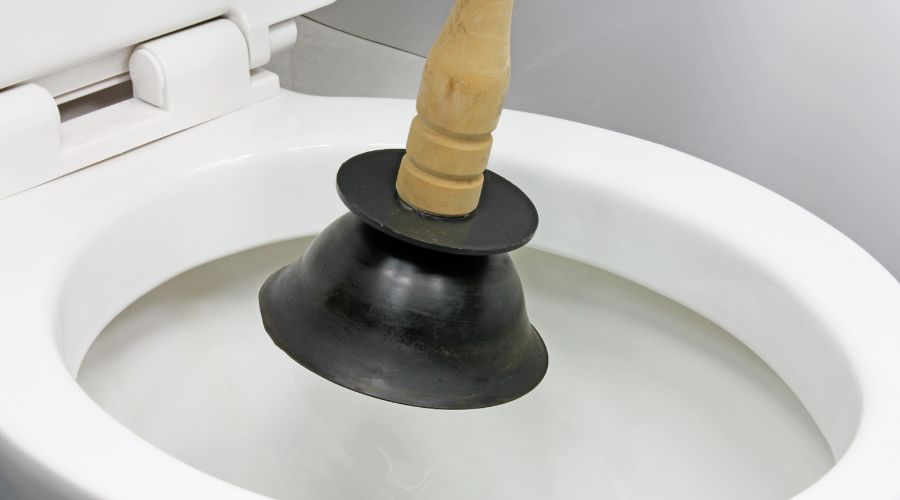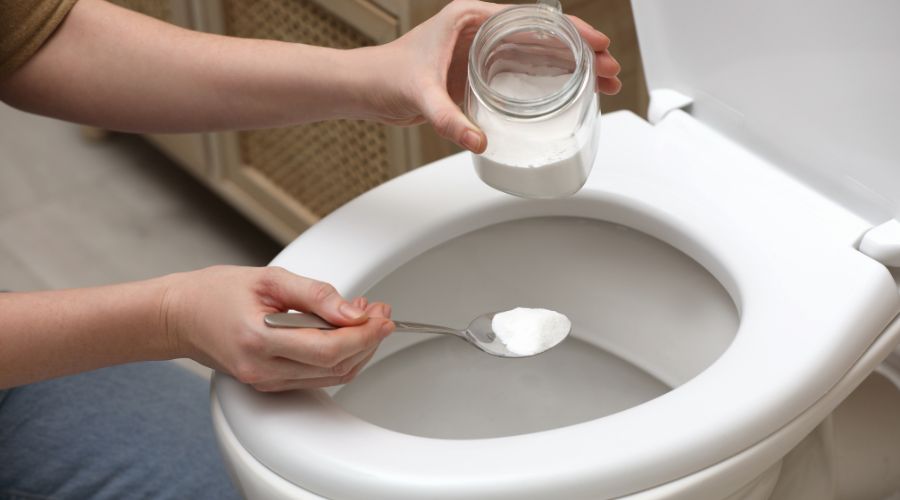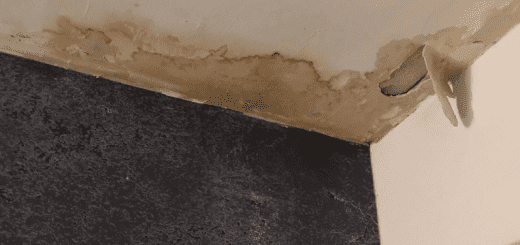Why Does My Toilet Smell Like Sewage?
Does your bathroom smell like sewageSewage is wastewater containing biological and chemical cont... More? If your toilet emits such an odorAn odor is a smell, often detectable by the human nose, whic... More, it’s a cause for concern. This article will explore the reasons behind a smelly toilet and offer solutions to eliminate the odorAn odor is a smell, often detectable by the human nose, whic... More. Recognizing the smell, understanding its causes, and addressing it promptly can prevent further damage and costly repairs. If you’re unsure how to tackle the issue yourself, it’s wise to call a professional who can resolve it for you.

Reasons Your Toilet Smells Like Sewage
If you’ve tried various bowl cleaners to eliminate a bad odorAn odor is a smell, often detectable by the human nose, whic... More from your toilet, dismantled the seat to clean hard-to-reach areas, and still notice a sewageSewage is wastewater containing biological and chemical cont... More smell, you may be facing a deeper issue that requires professional attention. This persistent odorAn odor is a smell, often detectable by the human nose, whic... More can be frustrating and concerning, often pointing to underlying problems that aren’t easily resolved with standard cleaning methods.
There are several reasons for a sewageSewage is wastewater containing biological and chemical cont... More odorAn odor is a smell, often detectable by the human nose, whic... More in the bathroom. Blocked or damaged pipes, a malfunctioning toilet seal, or issues with the sewer line can all contribute to this unpleasant smell in your toilet.
Sometimes, a simple flush can resolve the issue, especially if there’s a temporary blockage in the plumbing. However, if the smell persists, it’s best to call a professional plumber who can diagnose and address the root cause of the problem. Ignoring it might leadLead is a heavy metal that can be toxic to humans, especiall... More to more significant issues down the road, including potential health hazards, toilet overflows, and more extensive damage to your plumbing system.
Can Sewage Gas Cause Damage?
Yes, sewageSewage is wastewater containing biological and chemical cont... More gas, primarily composed of methane and hydrogen sulfide, is highly toxic when inhaled in high concentrations. It typically has a foul and pungent odorAn odor is a smell, often detectable by the human nose, whic... More that is often described as smelling like rotten eggs or sulfur. A continuous exposure can leadLead is a heavy metal that can be toxic to humans, especiall... More to respiratory problems, headaches, nausea, and in extreme cases, even death. Additionally, sewageSewage is wastewater containing biological and chemical cont... More gas is flammable and can pose a serious explosion hazard in enclosed spaces. Furthermore, the presence of hydrogen sulfide can corrode metal pipes and infrastructure, leading to costly damage and potential structural integrity issues in sewageSewage is wastewater containing biological and chemical cont... More systems.
What Causes Sewer Smell in the Bathroom?
There are several reasons your bathroom might have a sewageSewage is wastewater containing biological and chemical cont... More odorAn odor is a smell, often detectable by the human nose, whic... More. If cleaning your toilet hasn’t resolved the issue, consider these possible causes:
There is no water in the p-trap
Fixing this issue is straightforward. If you have a seldom-used toilet, such as in a guest room or a pool house, you might notice a sewageSewage is wastewater containing biological and chemical cont... More smell in the bathroom after returning from a vacation. This odorAn odor is a smell, often detectable by the human nose, whic... More is due to the p-trap, the pipe behind your toilet, which dips down and then rises back up. The p-trap’s purpose is to block sewageSewage is wastewater containing biological and chemical cont... More gases from entering your home by keeping it filled with water. When the toilet isn’t used for a while, the water in the p-trap can evaporate, allowing sewageSewage is wastewater containing biological and chemical cont... More gas to seep through. The easiest solutionA solution is a homogeneous mixture of two or more substance... More is to flush the toilet a few times, replenishing the water and eliminating the odorAn odor is a smell, often detectable by the human nose, whic... More.
Clogged toilet drain
Even if your toilet seems to be working properly, you may have a clog inside of your pipe. This will make your toilet smell like a sewer if you do not unclogTo unclog is to clear obstructions from pipes, drains, or eq... More it. To unclogTo unclog is to clear obstructions from pipes, drains, or eq... More your toilet, you may need to use a snake.
Bacteria from the sewer is getting into your toilet bowl
Microorganisms from the sewer can sometimes make their way into your toilet bowl, especially in hot weather when bacteria multiply more rapidly. These microbesMicrobes are microscopic organisms, including bacteria, fung... More can reach the rim of the bowl and proliferate. To tackle this, simply pour a few cups of bleach into the overflow pipe or flush valve inside the toilet tank. Then, flush the toilet to release the bleach, effectively eliminating the bacteria and sewer odorAn odor is a smell, often detectable by the human nose, whic... More from the bathroom.
Clogged vent pipe
The vent pipe in your plumbing system extends to the roof to ventilate sewer gases and allow air to enter, ensuring wastewaterWastewater is used water that contains contaminants, chemica... More flows smoothly. A clog in this vent can cause unpleasant sewage odors in your bathroom. To resolve this, inspect the vent for obstructions, which might be as simple as a bird’s nest. It’s advisable to contact a professional plumber to clear any blockages effectively.
The sealing ring on your toilet has damage
The wax sealing ring under the toilet can become loose. When this happens, sewageSewage is wastewater containing biological and chemical cont... More gas can get through the cracks and cause a sewer smell in the bathroom. If your toilet wobbles or rocks, this means that you need a new wax sealing ring. The replacement of the wax sealing ring around your toilet should be done by a professional plumber as they will need to remove the toilet and adjust your plumbing fixtures.
If you are unsure of how to fix the sewageSewage is wastewater containing biological and chemical cont... More smell in your bathroom, you will need to call a professional plumbing company. You should never try to do this work yourself as you can cause additional damage.
How Do I Get Rid of Sewer Smell in Toilet?
Dealing with a sewer smell in your toilet can be unpleasant and often indicates a problem that needs addressing. Here are some steps you can take to identify the cause and eliminate the odorAn odor is a smell, often detectable by the human nose, whic... More:

Check for Blockages
A blockage in your toilet or plumbing system can cause sewer gases to back up and enter your home.
- Plunge the Toilet: Begin by using a toilet plunger to dislodge any potential obstructions in the toilet drain.
- Snake the Drain: If plunging doesn’t work, use a plumbing snake to reach deeper into the pipes and clear blockages.
Thoroughly Clean the Toilet
Bacteria buildup within the toilet can emit unpleasant odors.
- Clean Under the Rim: Utilize a toilet brush and a powerful cleaner to scrub away any bacterial residueResidue is any leftover material, such as soot, dust, or che... More hiding under the rim.
- Disinfect: Use a potent disinfectantA disinfectant is a chemical substance used to kill or inact... More to sanitize the entire toilet, including the bowl, tank, and surrounding areas.
Inspect the Toilet Seal
A compromised wax ring or loose seal can allow sewer gases to escape.
- Check for Leaks: Inspect the base of the toilet for any signs of water leakage or instability.
- Replace the Wax Ring: If the seal is damaged, consider replacing the wax ring to ensure a proper seal and prevent gas leakage.
Flush and Clean the Drain Vent
A clogged vent stack can leadLead is a heavy metal that can be toxic to humans, especiall... More to the accumulation of sewer gases.
- Locate the Vent Pipe: Head up to the roof and take a look at the vent pipes. Check if they’re damaged or blocked to make sure gases can escape safely.
- Clear Obstructions: Using a plumbing snake or pressurized water, to eliminate any blockages obstructing the vent pipe.
Address Dry P-Traps
Dry P-traps can allow sewer gases to escape through drains, leading to unpleasant odors.
- Flush Drains: To prevent P-traps from dryingDrying is the process of removing moisture from materials, s... More out, periodically pour water into infrequently used drains throughout your home. This simple act helps maintain the water barrier within the trap, preventing gases from entering your living space.
- Use Mineral Oil: For drains that are rarely used, consider adding a small amount of mineral oil to the P-trap. This helps slow down water evaporationEvaporation is the process by which a liquid, such as water,... More, prolonging the effectiveness of the trap in blocking sewer gases.
Use Natural Cleaners

Baking soda and vinegar can effectively neutralize odors.
- Baking Soda Treatment: Start by pouring one cup of baking soda into the toilet bowl. Baking soda acts as a natural deodorizer and helps absorb foul odors.
- Vinegar Follow-Up: After allowing the baking soda to sit for a few minutes, pour one cup of vinegar into the bowl. The reaction between the baking soda and vinegar helps break down any residual grime and eliminates odor-causing bacteria. Allow the mixture to fizz and work its magic before scrubbing the bowl and flushing.
Utilize Commercial Odor Neutralizers
Various commercial products are specifically formulated to neutralize and eliminate toilet odors effectively.
- Follow Instructions: When using commercial odorAn odor is a smell, often detectable by the human nose, whic... More neutralizers, always read and follow the manufacturer’s instructions carefully. These products typically come in liquid or tablet form and can be added directly to the toilet bowl or tank as directed.
Investigate the Toilet Tank
The tank can also be a potential source of unpleasant odors if not properly maintained.
- Tank Cleaning: Begin by draining the toilet tank completely. Remove any accumulated sediment or buildup using a scrub brush and a mixture of water and mild detergent. Thoroughly rinse the tank to remove all traces of cleaning solutionA solution is a homogeneous mixture of two or more substance... More before refilling it with fresh water.
- Tank Cleaner Tablets: Consider using tank cleaner tablets to prevent future buildup and odors. These tablets dissolve slowly in the water, releasing cleaning agents and deodorizers to help keep your toilet tank clean and fresh between regular cleanings.
Professional Sewage Cleaning

If you have experienced water damage in your bathroom or a sewage backup, it is crucial to call a water damage restorationWater damage restoration is the professional process of clea... More specialist immediately. These highly trained technicians utilize advanced equipment and methods to clean, dry, disinfect, and restore your property to its original state. They are prepared to manage various types of water damage, whether it’s from a minor leak or a major flood.
Firstly, you can expect water mitigation experts to remove standing water, including contaminated water like sewageSewage is wastewater containing biological and chemical cont... More. Subsequently, they will thoroughly disinfect the affected areas to ensure they are safe to use. Additionally, they will assess the extent of the damage and check for hidden moisture that could leadLead is a heavy metal that can be toxic to humans, especiall... More to moldMold is a type of fungus that grows in damp or humid conditi... More growth. To prevent future water damage, they will implement effective strategies. This comprehensive approach ensures that your property is fully restored, minimizing the risk of long-term issues.












